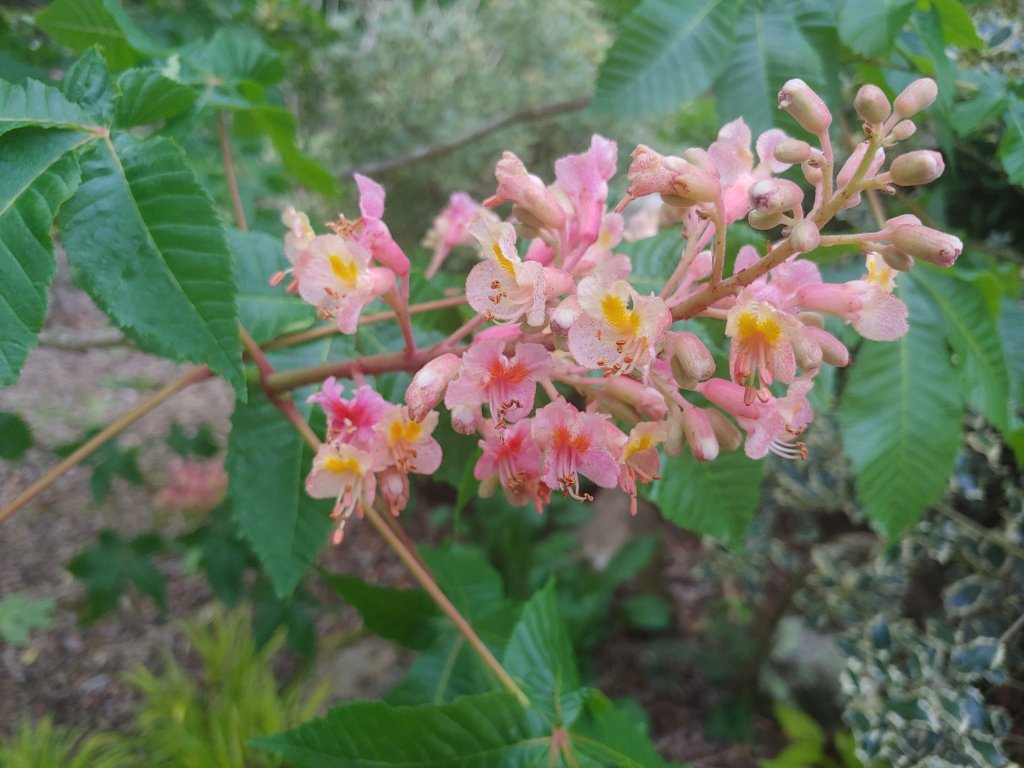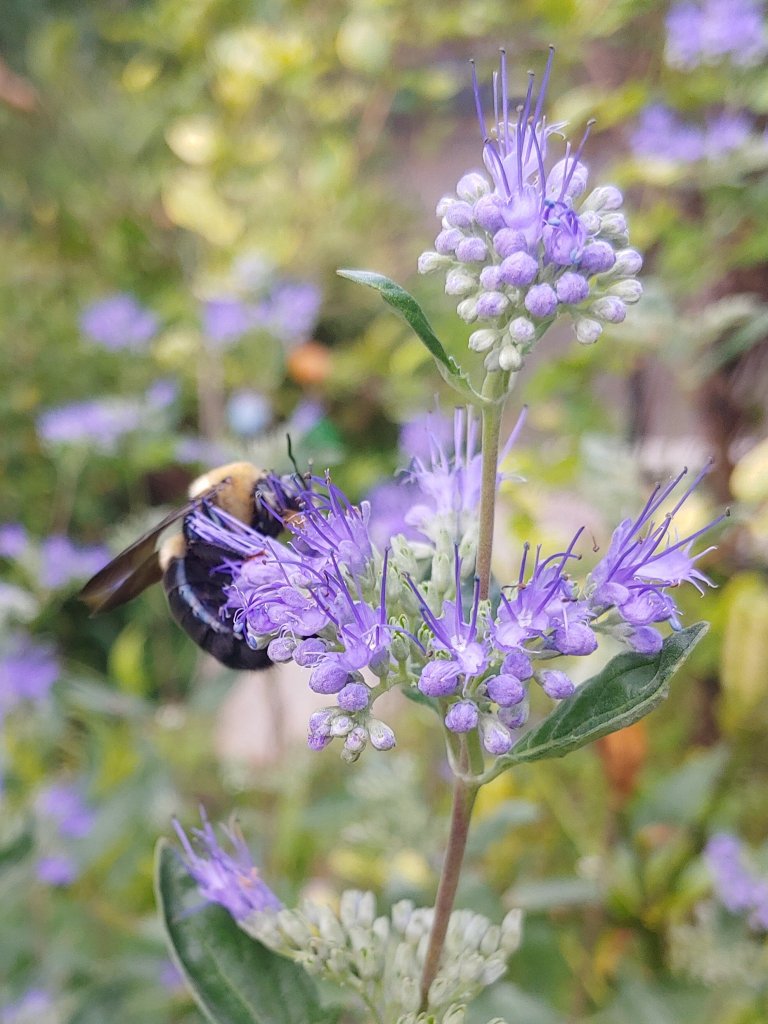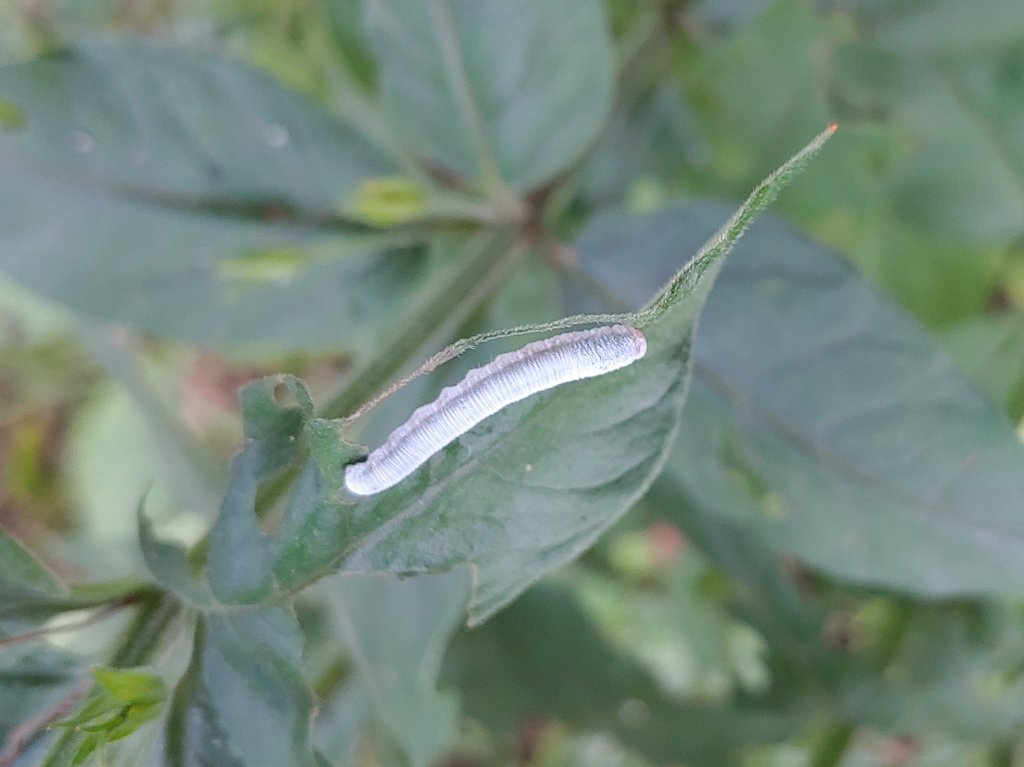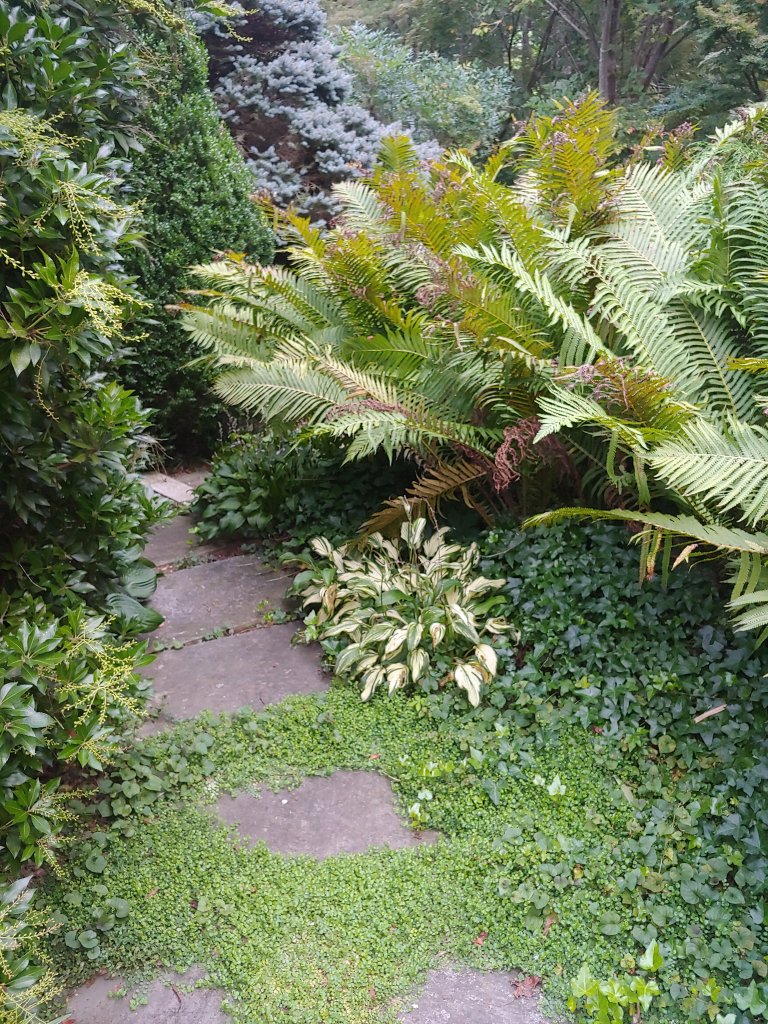Spotting of foliage of the red horse chestnut seems unavoidable by midsummer. Probably, a regimen of fungicides would prevent this annual plague, but instead I must recall its most glorious spring days and know that the disfiguring spots will not deter their return.


Certainly, the severe spotting might persuade against planting the horse chestnut, but I could not be without one. The advantage of an acre and a quarter garden is that while one tree experiences a valley, others are at their splendid peaks.

I suspect that my lack of attention must inflict a far greater degree of damage to the garden than fungi, caterpillars or beetles. Yes, there’s an occasional infestation, but rarely with more than minimal damage. I suppose due to an abundance of birds, and with numerous pleasant diversions, no preventative measures are necessary for pest control. But of course, there is little to be done to improve my distraction.

I notice the caterpillar eaten foliage of a vigorous Lysimachia, its spread held in check in the shade of a low branched dogwood. When not covered in yellow blooms, this can be seen only by stooping beneath the dogwood’s branches, which I rarely do until I noticed a few weeds getting rather large. The slightly sunnier edge of the Lysimachia clump is well chewed, and it would not bother me a bit if the few caterpillars ventured deeper into the patch. Certainly, nothing can hurt this rambunctious perennial.

Japanese beetles were scarce in the garden this summer. Never are they much of a problem, but even less this year, so instead of chewing the tips of Ostrich ferns, ones that have spread into the full summer sun are damaged. The spread of this vigorous fern is easily tamed, but I prefer its lean over the bluestone path. I can overlook the late summer damage to frond tips by beetles, or too much sun.
I’m new to gardening. I was worried about the brown tips on my ostrich ferns; after reading your post, I won’t worry now. Thanks for the photos.
By late summer, heat takes its toll on hostas, geraniums, and of course Ostrich ferns. I must accept plants that become worn, instead focusing on those that thrive in the heat.
Dave, it’s so refreshing to see someone who doesn’t find it necessary to eradicate every living thing in the garden that’s chewing something. Those caterpillars are so necessary to the lives of so very many woodland birds – cuckoos, vireos, & warblers, just to name a few.
Long ago, I recall reading Henry Mitchell stating that pesticides achieved their intended purpose only temporarily, yet pest control was at the top of every monthly to do list. I could not understand how killing an aphid would not also harm a bee. I have been surprised that planting a range of plants and doing nothing has been more effective as long as an occasional lysimachia or redbud stripped of leaves is accepted.
Heck, that is not so bad. The California buckeye is ‘twice deciduous’, which means that, after foliating for spring, it defoliates through the warmth of summer, then foliates again for autumn and early winter, only to defoliate for late winter. In sheltered or partly shaded situations, the foliage that should shed for summer lingers, crispy and very dead, and hanging from seemingly dead trees. So, the trees either look dead with leaves, or dead without leaves. Nonetheless, we like them anyway.
Dave, as a newbie gardener, I enjoy your blog so much.
Your photos are stunning. May I ask you to consider adding the name of the plant, either on the photo itself, under it, or in the caption. Both the pink and blue flowers in this issue made me immediately ask, “What is it?”
I’m very sorry. I try always to refer to a plant in the paragraph or to identify it in the caption, or both. I did not in this case. The blue flowered shrub is caryopteris, commonly called bluebeard or blue mist shrub. It is a deciduous shrub for full to part sun that flowers beginning early to mid August for a month or longer. There are a number of similar bluebeard varieties with lighter or darker flowers, and some selections with yellow or green and white variegated leaves. Most bluebeards have woody stems that survive the winter without requiring pruning in the spring, though winters with temperatures nearing zero will often kill the tips so that minor pruning is required.
I realize now that the pink flowers are produced by the horse chestnut. Is the purple the Lysimachia?
The pink flowers are from the horse chestnut and the blue from caryopteris, or bluebeard.